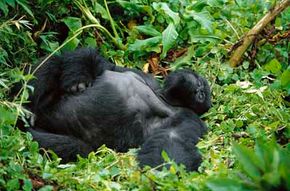When was the last time you heard promising news about an animal species? Like a baseball franchise stuck in a slump, the number of animals joining the ranks of endangered species has ballooned in recent decades. Granted, the bald eagle and wolf population recoveries in the United States were celebrated comebacks, but tigers, polar bears, rhinos and many more still teeter on the slippery slope toward extinction.
Great apes -- gorillas, chimpanzees, bonobos and orangutans -- all make that disheartening list of endangered animals. Poaching and deforestation in Africa have contributed greatly to the population decline of gorillas in particular. But the Ebola virus sent the species on a nosedive toward disappearance in 2006. The virus, named for the Ebola River in the Democratic Republic of the Congo, killed an estimated 90 percent of gorillas it infected [source: Ravilious]. One study found that the virus claimed the lives of 5,000 gorillas in one geographical area and possibly 25 percent of the world's gorilla population [source: Ravilious].
Advertisement
There are four gorilla subspecies: eastern lowland gorillas, western lowland gorillas, mountain gorillas and cross-river gorillas. Western lowland gorillas primarily inhabit rainforests in Western and Central African countries including the Congo, Gabon and Central African Republic [source: National Geographic]. Twenty years ago, population surveys indicated that this subspecies was critically endangered with fewer than 100,000 remaining [source: Revkin].
But in August 2008, the Wildlife Conservation Society announced what could be a ninth-inning home run for the great apes. Its survey of the western lowland gorilla subspecies found at least 125,000 living in a densely forested area of the Congo, referred to as the "green abyss" [source: Nielsen]. Few people live in this nearly impassable swampy landscape, insulating the gorilla's habitat, and the Ebola virus has yet to reach the area [source: Nielsen].
Although gorillas are the largest of the great ape species, they can be difficult to track down. They change locations every day in search of food, and the dense foliage they live in doesn't make finding them any easier. So how did the surveyors pinpoint a population number for these apes?
Advertisement



